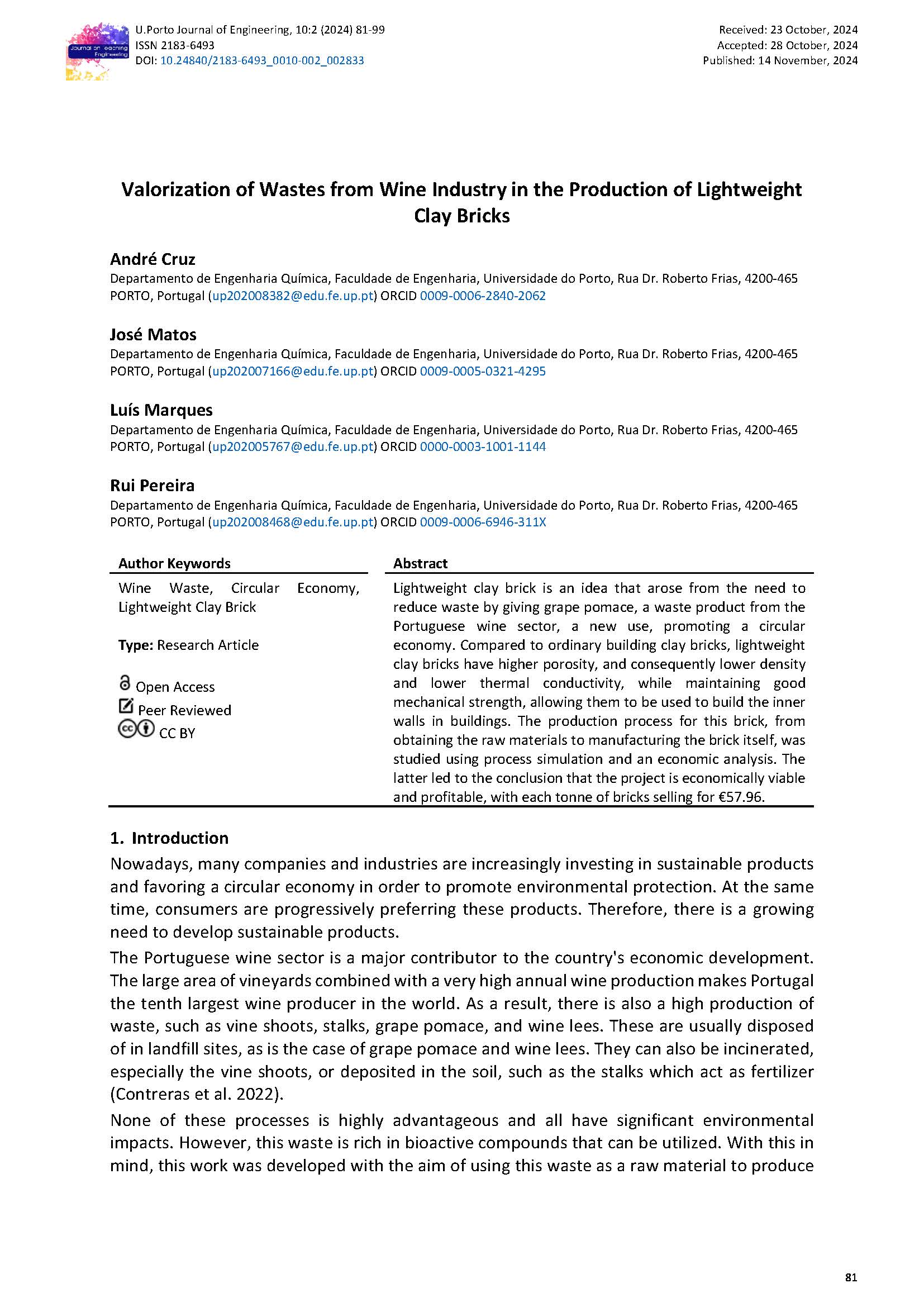Valorization of Wastes from Wine Industry in the Production of Lightweight Clay Bricks
Main Article Content
Abstract
Lightweight clay brick is an idea that arose from the need to reduce waste by giving grape pomace, a waste product from the Portuguese wine sector, a new use, promoting a circular economy. Compared to ordinary building clay bricks, lightweight clay bricks have higher porosity, and consequently lower density and lower thermal conductivity, while maintaining good mechanical strength, allowing them to be used to build the inner walls in buildings. The production process for this brick, from obtaining the raw materials to manufacturing the brick itself, was studied using process simulation and an economic analysis. The latter led to the conclusion that the project is economically viable and profitable, with each tonne of bricks selling for €57.96.
Downloads
Article Details

This work is licensed under a Creative Commons Attribution 4.0 International License.
Authors who publish with this journal agree to the following terms:
- Authors retain copyright and grant the journal right of first publication with the work simultaneously licensed under a Creative Commons Attribution License that allows others to share the work with an acknowledgement of the work's authorship and initial publication in this journal.
- Authors grant the journal the rights to provide the article in all forms and media so the article can be used on the latest technology even after publication and ensure its long-term preservation.
- Authors are able to enter into separate, additional contractual arrangements for the non-exclusive distribution of the journal's published version of the work (e.g., post it to an institutional repository or publish it in a book), with an acknowledgement of its initial publication in this journal.
- Authors are permitted and encouraged to post their work online (e.g., in institutional repositories or on their website) prior to and during the submission process, as it can lead to productive exchanges, as well as earlier and greater citation of published work (See The Effect of Open Access).

